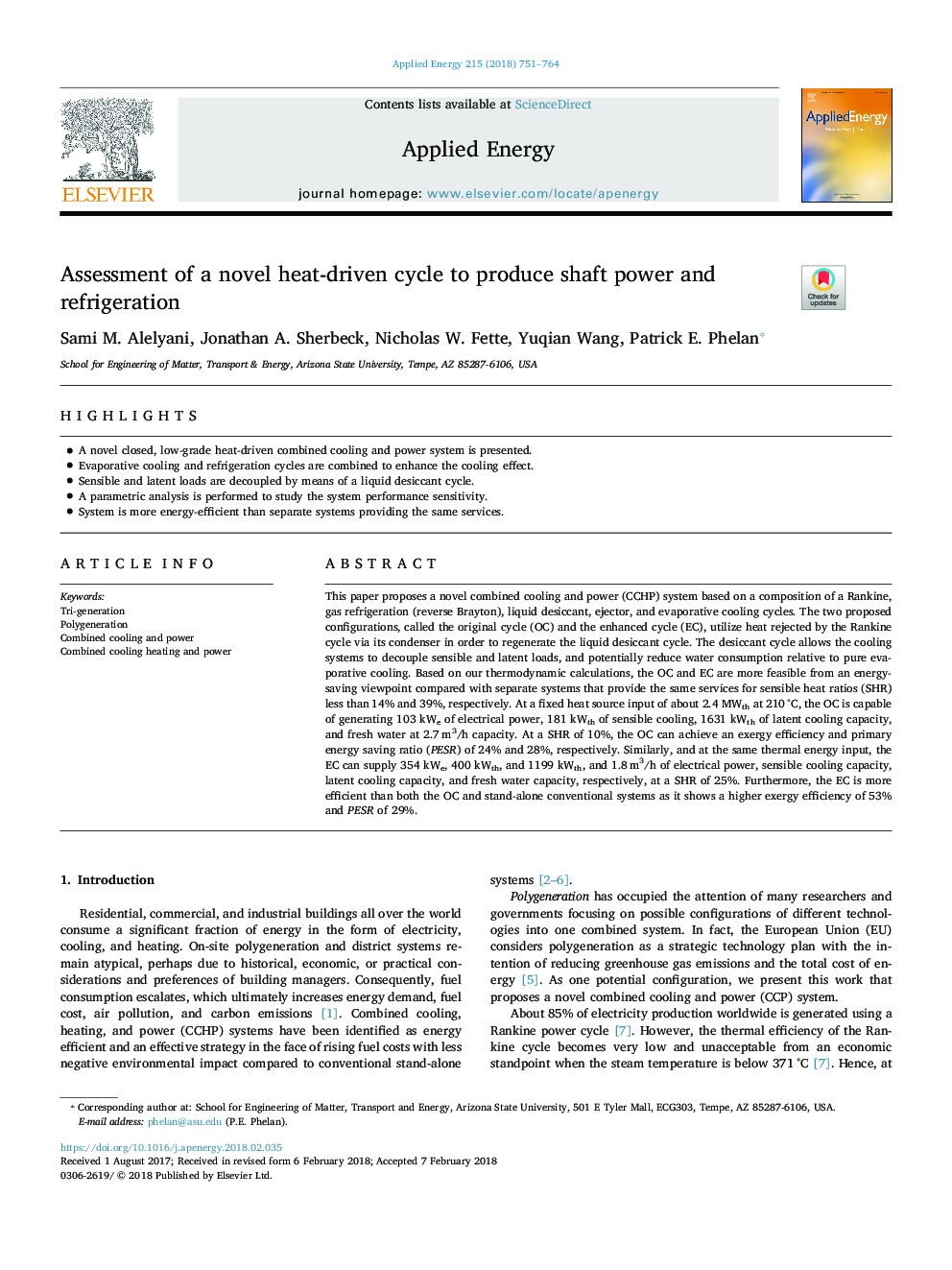| Article ID | Journal | Published Year | Pages | File Type |
|---|---|---|---|---|
| 6680719 | Applied Energy | 2018 | 14 Pages |
Abstract
This paper proposes a novel combined cooling and power (CCHP) system based on a composition of a Rankine, gas refrigeration (reverse Brayton), liquid desiccant, ejector, and evaporative cooling cycles. The two proposed configurations, called the original cycle (OC) and the enhanced cycle (EC), utilize heat rejected by the Rankine cycle via its condenser in order to regenerate the liquid desiccant cycle. The desiccant cycle allows the cooling systems to decouple sensible and latent loads, and potentially reduce water consumption relative to pure evaporative cooling. Based on our thermodynamic calculations, the OC and EC are more feasible from an energy-saving viewpoint compared with separate systems that provide the same services for sensible heat ratios (SHR) less than 14% and 39%, respectively. At a fixed heat source input of about 2.4 MWth at 210â¯Â°C, the OC is capable of generating 103 kWe of electrical power, 181 kWth of sensible cooling, 1631 kWth of latent cooling capacity, and fresh water at 2.7â¯m3/h capacity. At a SHR of 10%, the OC can achieve an exergy efficiency and primary energy saving ratio (PESR) of 24% and 28%, respectively. Similarly, and at the same thermal energy input, the EC can supply 354 kWe, 400 kWth, and 1199 kWth, and 1.8â¯m3/h of electrical power, sensible cooling capacity, latent cooling capacity, and fresh water capacity, respectively, at a SHR of 25%. Furthermore, the EC is more efficient than both the OC and stand-alone conventional systems as it shows a higher exergy efficiency of 53% and PESR of 29%.
Related Topics
Physical Sciences and Engineering
Energy
Energy Engineering and Power Technology
Authors
Sami M. Alelyani, Jonathan A. Sherbeck, Nicholas W. Fette, Yuqian Wang, Patrick E. Phelan,
